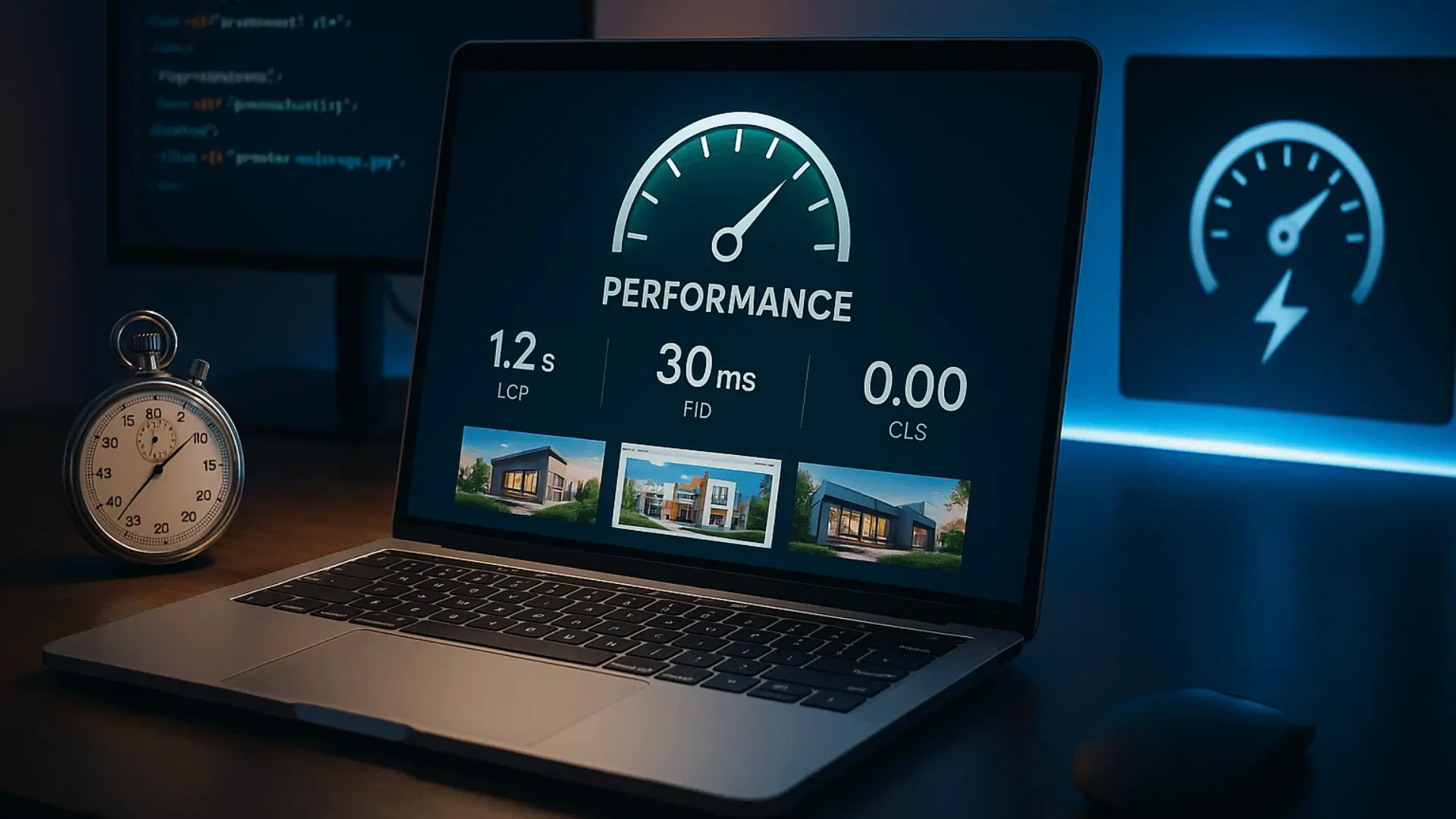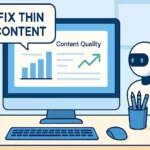Core Web Vitals Optimization 2025: Ultimate Technical SEO Guide

Understanding Core Web Vitals in 2025
Google uses these metrics to evaluate your site’s overall performance and user-friendliness.These metrics are officially defined in Google’s Core Web Vitals documentation. That’s why Core Web Vitals optimization should be part of your overall content strategy. For a full guide on writing SEO-friendly posts that rank, read our in-depth article: How to Write Blog Posts That Rank on Google in 2025.
The Three Pillars of Core Web Vitals
- Largest Contentful Paint (LCP)
- Measures loading performance
- Ideal threshold: Under 2.5 seconds
- Directly impacts first impression and user engagement
- First Input Delay (FID)
- Measures interactivity
- Target: Less than 100 milliseconds
- Ensures website responds quickly to user interactions
- Cumulative Layout Shift (CLS)
- Measures visual stability
- Goal: Less than 0.1
- Prevents unexpected layout movements
Core Web Vitals Optimization Strategies
In this section, we’ll walk you through practical Core Web Vitals optimization strategies to improve your site’s performance step by step.
1. LCP Optimization Techniques
Server-Side Improvements
- Hosting Optimization:
- Use premium, high-performance hosting
- Consider dedicated or cloud hosting solutions
- Implement server-side caching
Front-End Optimization
<!-- Recommended HTML Optimization -->
<link rel="preload" href="main-image.jpg" as="image">
<link rel="preconnect" href="https://cdn.example.com">
Performance Checklist:
- Compress and optimize images
- Use next-gen image formats (WebP, AVIF)
- Implement lazy loading
- Minimize critical rendering path
2. FID Optimization Strategies
JavaScript Management
// Optimize JavaScript Execution
document.addEventListener('DOMContentLoaded', () => {
// Defer non-critical scripts
const nonCriticalScripts = document.querySelectorAll('[data-non-critical]');
nonCriticalScripts.forEach(script => {
script.setAttribute('defer', true);
});
});
For more technical insights on reducing JavaScript execution time and improving First Input Delay (FID), check out Google’s performance optimization guide.
Key Optimization Techniques:
- Break up long tasks
- Use web workers for complex computations
- Minimize third-party script usage
- Implement code splitting
3. CLS Reduction Methods
CSS Best Practices
/* Reserve Space for Dynamic Content */
.image-container {
aspect-ratio: 16 / 9;
width: 100%;
height: auto;
}
/* Prevent Layout Shifts */
img {
max-width: 100%;
height: auto;
}
Layout Stability Strategies:
- Set explicit dimensions for media elements
- Use
aspect-ratiofor responsive design - Avoid inserting content above existing elements
- Preload critical resources
Comprehensive Optimization Tools
Choosing the right tools can dramatically boost your technical performance. If you’re building a blog from scratch or improving an existing one, our tutorial on how to start a blog and make money in 2025 provides foundational strategies that complement these tools.
Google PageSpeed Insights provides a reliable and free way to analyze your site’s loading speed and Core Web Vitals metrics.
Performance Measurement Tools
| Tool | Key Features | Price | Best For |
|---|---|---|---|
| Google PageSpeed Insights | Free detailed analysis | Free | Initial diagnostics |
| GTmetrix | Comprehensive performance reports | Free / Paid | Detailed optimization |
| WebPageTest | Advanced performance testing | Free | In-depth technical analysis |
| Lighthouse | Browser-based performance audit | Free | Integrated Chrome testing |
Expert Insights
“Core Web Vitals are no longer optional – they’re a critical ranking factor. Optimize or get left behind.” – John Mueller, Google Search Advocate
Practical Implementation Roadmap
- Audit Current Performance
- Run comprehensive site speed tests
- Identify specific performance bottlenecks
- Need help organizing your optimization process? Use our SEO Technical Audit Checklist to identify and fix critical issues efficiently.
- Prioritize Optimizations
- Address most critical issues first
- Focus on quick-win improvements
- Continuous Monitoring
- Set up regular performance tracking
- Implement ongoing optimization process
FAQ: Technical SEO Questions
Q1: How Often Should I Check Core Web Vitals? A: Minimum quarterly, preferably monthly with automated monitoring.
Q2: Do Core Web Vitals Affect All Websites Equally? A: Impact varies by industry, but all sites benefit from optimization.
Q3: Can I Improve Core Web Vitals Without Technical Skills? A: Consider professional help or use user-friendly optimization plugins.
📌 If you’re planning to monetize your optimized blog, don’t miss our step-by-step guide on digital product creation and strategies for monetizing your email list in 2025.
Conclusion: Core Web Vitals Optimization in Action
Technical optimization is an ongoing journey, and effective Core Web Vitals optimization is at the heart of that process. By systematically improving Core Web Vitals, you’ll not only boost search rankings but create a superior user experience. Make Core Web Vitals optimization a regular part of your content workflow to stay competitive and deliver an excellent user experience.
If you’re also optimizing your email marketing as part of your SEO-driven blog growth, don’t miss our detailed comparison — ConvertKit vs Mailchimp for Bloggers. It’s essential reading if you want to build a high-converting email list that actually drives revenue.
🚀 Want Advanced SEO Strategies? 👉 Join “BloggingRevenue” Telegram for exclusive technical insights!
📚 Related Articles:








